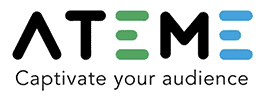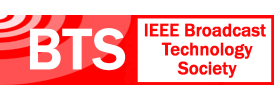- About
- Members
- Sponsors
- Subcommittees
- Technical Documents
- News
- Events
- Spotlight ATSC 3.0
- Contact Us
- Member Login
- Member Meetings
- Advanced Search
Search Site
Member Links
- About
- Members
- Sponsors
- Subcommittees
- Technical Documents
- News
- Events
- Spotlight ATSC 3.0
- Contact Us
- Member Login
- Member Meetings
- Advanced Search
Calling All Broadcasters: Join the ATSC Advanced Emergency Alerting Implementation Team!
Posted on September 8, 2016 in ATSC News
 With the majority of the ATSC 3.0 standards development work supporting Advanced Emergency Alerting (AEA) nearing completion, now’s the time to work on AEA-related station operational issues and receiver functionality issues.
With the majority of the ATSC 3.0 standards development work supporting Advanced Emergency Alerting (AEA) nearing completion, now’s the time to work on AEA-related station operational issues and receiver functionality issues.
The ATSC’s AEA Implementation Team is gearing up in September and welcomes new participants. According to AEA I Team Chairman Jay Adrick,, the team plans to develop an implementation guideline document for stations and provide input on receiver functionality to the consumer technology industry. “We really need more broadcasters to provide their input on these important topics,” he says.
Purpose
Simply put, the AEA I Team provides a venue for industry discussions of issues related to implementation of emergency alerting. “We’ll address business, regulatory and technical requirements for the successful inclusion of emergency alerting and the successful commercial rollout of ATSC 3.0,” Adrick explains. The I-Team, however, won’t develop standards or recommended practices; instead, the group may make recommendations related to studio and consumer implementations for emergency alerting.
Focus Areas
Among the areas the I Team plans to tackle: prototype equipment and content development (including emergency alerting and/or sub-system components); rich media generation systems/capabilities; broadcast station implementation; station integration with existing alerting and/or local emergency manager organizations; interoperability “plugfest” testing; field trials and demonstrations; market studies, marketing and promotion; branding; and compliance & certification.
Participation
Participation in the AEA I-Team is open to all organizations offering or planning to offer services, products or other efforts related to the implementation of ATSC 3.0. The base annual fee for participation in the AEA Implementation Team is $1,000 for ATSC members and $3,000 for non-members. Click here to join.
The first meeting is scheduled for 2 p.m. EDT on September 27. For more information, please contact GatesAir’s Jay Adrick (jadrick@gatesair.com) or ATSC’s Daro Bruno (dbruno@atsc.org).
Posted in ATSC News
News Categories
News Archives
Subscribe
Subscribe to The Standard, our monthly newsletter. Learn More
Join ATSC
ATSC is a membership organization with both voting and observer categories. Voting members include corporations, nonprofit organizations, and government entities, and they participate actively in the work of ATSC. Observers are individuals or entities not eligible to be a voting member.
Subscribe to our Newsletter
Subscribe to The Standard, our monthly newsletter, to stay up-to-date with ATSC news and events around the world.
Site Links
Contact Us
ATSC
1300 I Street NW, Suite 400E
Washington, DC 20005 USA
Do you have questions about ATSC?
About ATSC
ATSC, the Broadcast Standards Association, is an international, non-profit organization developing voluntary standards and recommended practices for digital terrestrial broadcasting. Serving as an essential force in the broadcasting industry, ATSC guides the seamless integration of broadcast and telecom standards to drive the industry forward. Currently, the ATSC 3.0 Standard is providing the best possible solution for expanding the potential of the broadcast spectrum beyond its traditional application to meet changing needs. From conventional television to innovative digital data services, ATSC has one clear goal: to empower the broadcasting ecosystem like never before.
© 2025 ATSC





































